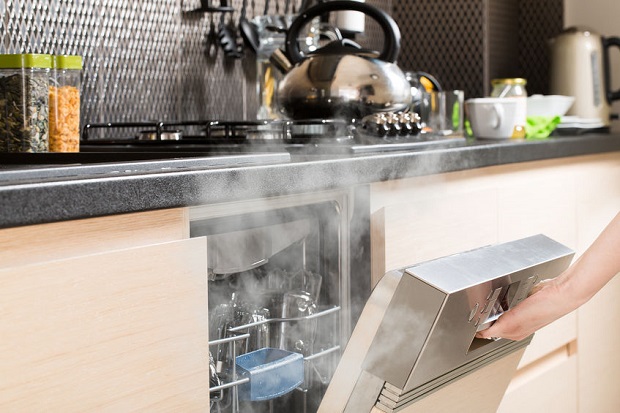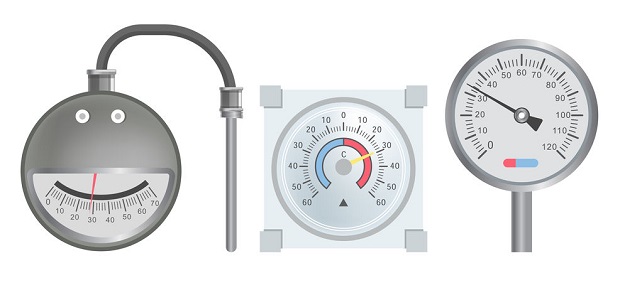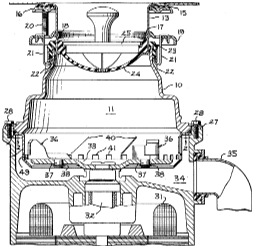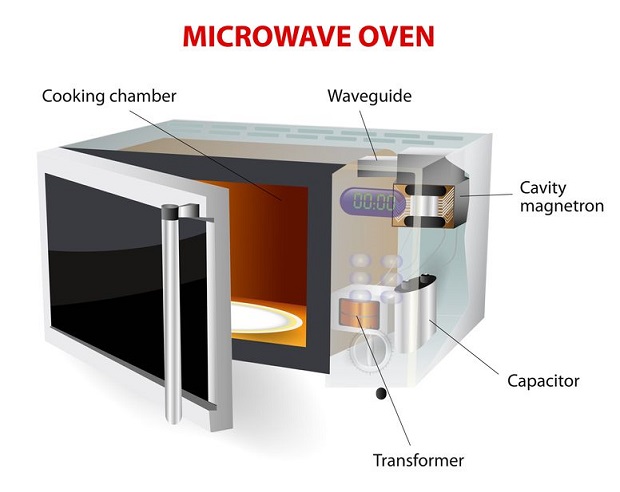
Dishwashers do need hot water. Though Cascade does state that their products are designed to work in hot water or cold, (See “what temperature should my water be” at Cascade FAQs) General Electric states, “proper water temperature is essential to achieve optimum results from your dishwasher and the detergent. Hot water is needed to dissolve and activate the detergent so that it can loosen and remove common food soils.” (See “Dishwasher: Poor Wash Performance” at the General Electric infobase) The company goes on to state that the hot water entering the dishwasher should be at least 120°F.
Health Concerns with Lower Water Temperatures
Another important reason to use hot water in the dishwasher is to ensure that all microorganisms present on your dishes are destroyed during the wash cycle. As an example, the state of New York requires that restaurants maintain specific water temperatures in regards to washing dishes. Water temperature for hot water mechanical dishwashers be set at 140°F–165°F for washing and 180°F for sanitizing. The board further requires that the water temperature for manual hot water sanitation be set at 170°F. [Prerating a Food Establishment in New York City Official Website of the City of New York]
The US Department of Energy recommends lowering the temperature of your water heater to 120°F to save money on standby losses and consumption but warns, “while there is a very slight risk of promoting legionellae bacteria when hot water tanks are maintained at 120ºF, this level is still considered safe for the majority of the population”. They do not suggest lowering your water temperature below 140ºF if you have a suppressed immune system or chronic respiratory disease. [See “Savings Project: Lower Water Heating Temperature” at Energy.gov]
For many people this isn’t an issue since newer dishwasher models are generally equipped with a booster heater, which allows you to lower your water heater temperature without sacrificing the high heat necessary for proper and sanitary dishwasher operations.
Use Colder Water by Purchasing the Right Dishwasher
Though they cost more initially, purchasing a dishwasher with a booster heater will generally pay for itself within the first year. A dishwasher with a booster heater will raise the temperature of the water running through the dishwasher allowing you to set the water temperature running throughout the house to a lower setting.
How to Lower Your Dishwasher Usage Costs
Run only full loads. If you are using an Energy Star® rated dishwasher and only fun full loads, you will actually save money over hand washing the same load of dishes.
Purchase a dishwasher that offers a variety of cycle setting that can accommodate both small and large loads. Small capacity dishwashers don’t always save money. Though it’s true that running a smaller dishwasher is more energy efficient than running a larger one, if you need to run it more than once it is likely costing you more.
Choose a dishwasher model that offers energy saving options such as an air dry cycle and shorter cycles for fewer dishes.
Install your dishwasher in a location that is not abutting the refrigerator. The heat and moisture produced by the dishwasher makes your refrigerator have to work harder.
Resources
“Cascade FAQ – Dishwasher Detergent Questions | Cascade.” Cascade. N.p., n.d. Web. 13 Mar. 2014. <http://www.cascadeclean.com/us/cascade/faq#4>.
“Dishwasher – Poor Wash Performance.” GE Appliances. N.p., n.d. Web. 13 Mar. 2014. <http://www.geappliances.com/search/fast/infobase/10000390.htm>.
“Savings Project: Lower Water Heating Temperature.” Energy.gov. US Department of Energy, n.d. Web. 12 Mar. 2014. <http://energy.gov/energysaver/projects/savings-project-lower-water-heating-temperature>.
“Prerating a Food Establishement in New York City.” Official Website of New York City. N.p., n.d. Web. 13 Mar. 2014. <http://www.nyc.gov/html/doh/downloads/pdf/inspect/inspect-guide-part2.pdf>.
Related Products
Shop for built-in dishwashers, portable dishwashers, specialty dishwashers, parts and accessories, and more.






